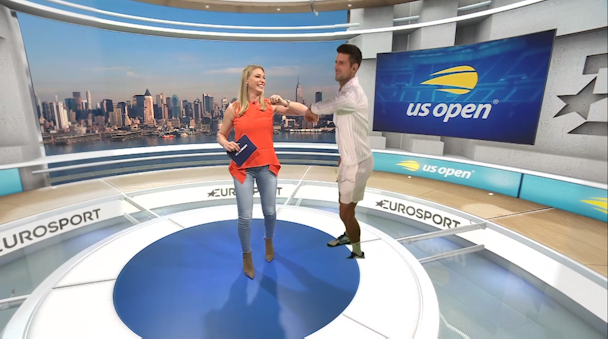Problem Solved #10: Holograms and virtual tech help broadcasters skirt Covid-19 issues
To mark the launch of our new manifesto – setting out The Drum’s editorial mission to help readers solve their problems – we’re christening today Solutions Day on thedrum.com. And to set the tone, over the course of 24 hours our team of worldwide journalists will be spotlighting 24 recent examples of times when our industry demonstrated its remarkable talent for solving problems.

Problem #10: holograms and virtual tech helps broadcasters skirt Covid-19 problems
Problem: As live sport returned, broadcasters had to operate as safely as possible. Travel was difficult, venues had restricted access to staff and events providers had to meet fans in the digital.
Solution: Broadcasters embraced cutting-edge tech and hologram broadcasting to conduct interviews without endangering the talent or staff. For Eurosport, this was about beaming arenas and athletes into the studio space.
Eurosport embraced mixed reality technology in order to bolster its live broadcasts, with hologram athletes offering an immersive experience to fans unable to attend their favourite sports. The technology was vital to bringing fans closer to the sport. Here's what you need to know:
-
Eurosport’s virtual studio space the ’Cube’ was static during the pandemic – arenas and athletes were live-streamed into the broadcast.
-
Top tennis players appearing in-studio as holograms during the US Open.
-
Eurosport believes it is bringing fans closer to the experience.
Elsewhere, Verizon took a different approach. Instead of connecting arenas and athletes to a virtual studio, it was the fans that were gathered in a digital experience.
Problem: Large physical audiences were locked out in lockdown, the desire to gather around cultural phenomena was redirected into the digital.
Solution: Verizon's Ryot Studio embraced newfangled realities (augmented, virtual and mixed) to create immersive experiences in the absence of physical.
Ryot built virtual worlds and developed new ways for people to engage with their fandoms. Prior to the pandemic, it worked with the NFL and Star Wars. In lockdown, it helped to deliver live VR broadcasts of the NBA and Indy 500, and a futuristic fashion show. Here's what you need to know:
-
With the fashion show, AR tech was used to enhance the experience and tell a story. If there's no enhancement or story to tell, the tech is a gimmick.
-
In virtual, the experience has to be familiar to its real-world counterpart - but different enough to be buzzworthy and deliver something new.
-
Don't embrace technology for technology's sake, said Mark Melling, head of Ryot Studio EMEA at Verizon Media,
Hinting at where this space develops, Melling added: “In lockdown so many types of human experiences changed. We have really focused on those that converge in the virtual and physical world.”
Read more Problem Solved articles in our Solutions Day hub.

